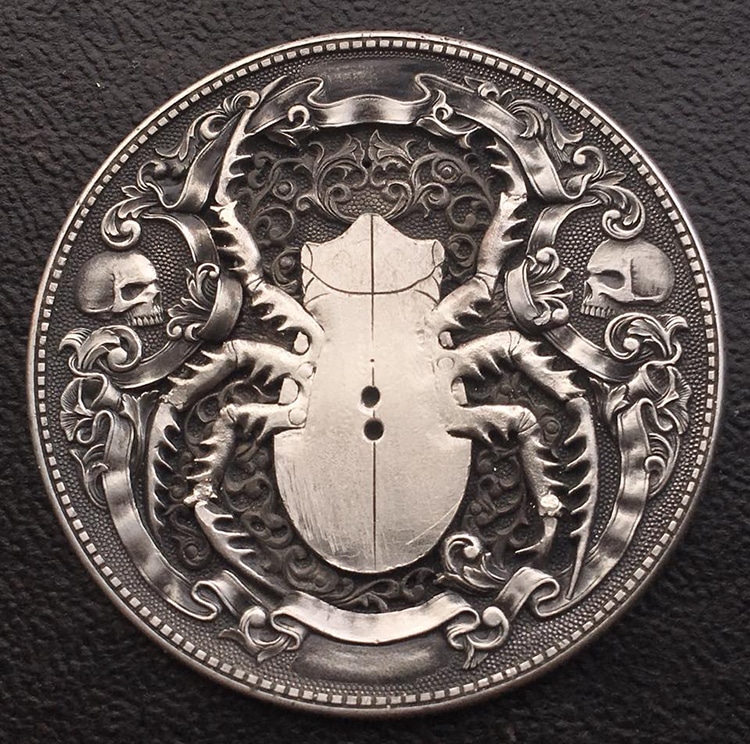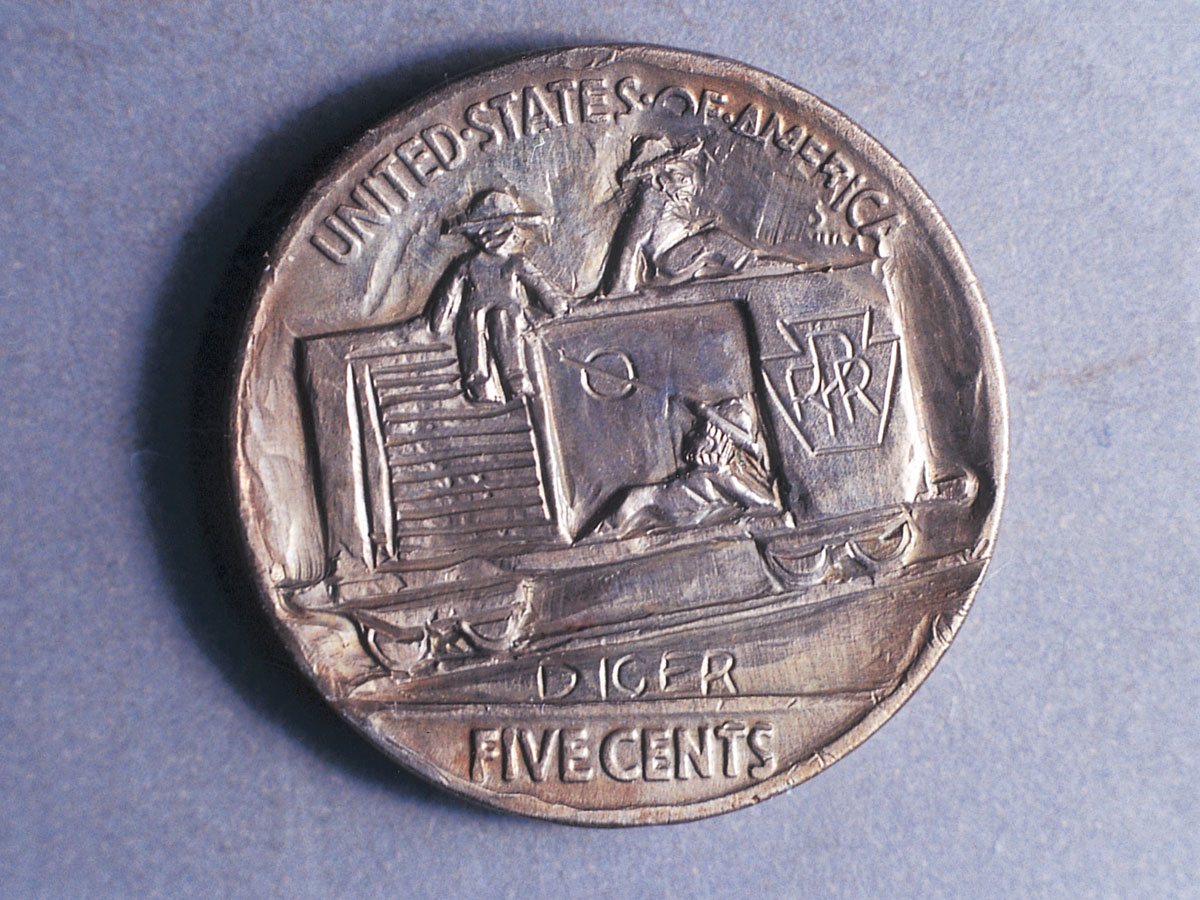Hobo Coins

A hobo nickel is a modified coin that typically bears a portrait or other image that integrates well with the original image on the coin. Techniques for carving these coins have changed over time, but the tools needed and materials required are typically inexpensive. The story behind these nickels goes that a traveling man without income could take a single nickel and turn it into a work of art and then exchange that art for more than the nickel was worth. Almost all hobo nickels bear faces of some kind, although some modify the non-face image on the nickel to create animals or other shapes. Some people collect hobo nickels, and a history of these items and their creators can be extracted from particular artistic conventions used by specific artists.

Coin engraving as an art form predates the emergence of the hobo nickel, but the physical qualities of nickels made this coin highly popular among engravers. Nickels are soft, large, and easy to work with, making this an ideal medium for engravers. Before hobo nickels, potty coins were the most popular engraving coins. Many of the techniques used on these coins carried forward into nickel carving.
The art found on a hobo nickel does depend in part on the art provided on the nickel. This means that as nickel designs changed over time, the art that was carved into those designs changed as well. Most nickels bear a profile portrait of some type because of the large face found on buffalo nickels. The features of this face are often altered in the carving process, changing the nose, ear, and beard. It is also possible to carve the buffalo side of a buffalo nickel, creating trains, camels, or other figures.
Although it is not uncommon to find a signed hobo nickel, some nickels are thought to be made by the same artist because they bear similar artistic qualities. Artists would often carve ears, noses, or beards in highly unique ways, making it easy to identify coins carved by the same artist. The identity of these carvers is not known, but by tracing their artwork it becomes possible to know something about their life.
Hobo Nickel Coins
The art of carving coins dates back to the 18th century. When the Indian Head, or Buffalo nickel, was introduced in 1913, it became popular with coin engravers. One story is that a hobo would carve a nickel and then trade that nickel for whatever he needed at the time. Food, lodging, a bath or a ride to his next stop or 'jump'. A hobo nickel is a coin that has had a piece of art carved into it. While many types of coins were used to create these pieces of art, nickels were especially favored for use because of their size, thickness, and moderate softness. There are many preowned Hobo. A hobo nickel is carved as opposed to engraved. Little by little metal is shaved away or mounded to create a miniature bas relief sculpture. Historically these coins were made by hoboes, itinerant workers, who often traveled by hopping freight trains. KaiKBax Morgan Hobo Nickel US Head - 1921 Hobo Nickel Coin -Old Coin Collecting-USA Old Morgan Dollar -Commemorative Gift Coin-It is Handmade Art Making Life Easier. Hobo Nickel Medieval Knight Holy Grail Christ Jesus Morgan Dollar Silver Casted US Unique Christmas Unique Carved Coin Rare. From shop Haileysworks. 4.5 out of 5 stars.



Hobo Coins Bert
Coin engraving is still a popular art form, and current coin engravers do still work with nickels. A modern hobo nickel is typically not used as an item for exchange, but rather purely as art. Some engravers add special materials to the nickels, such as gold or enamel. With special tools, additional designs and more details become possible.